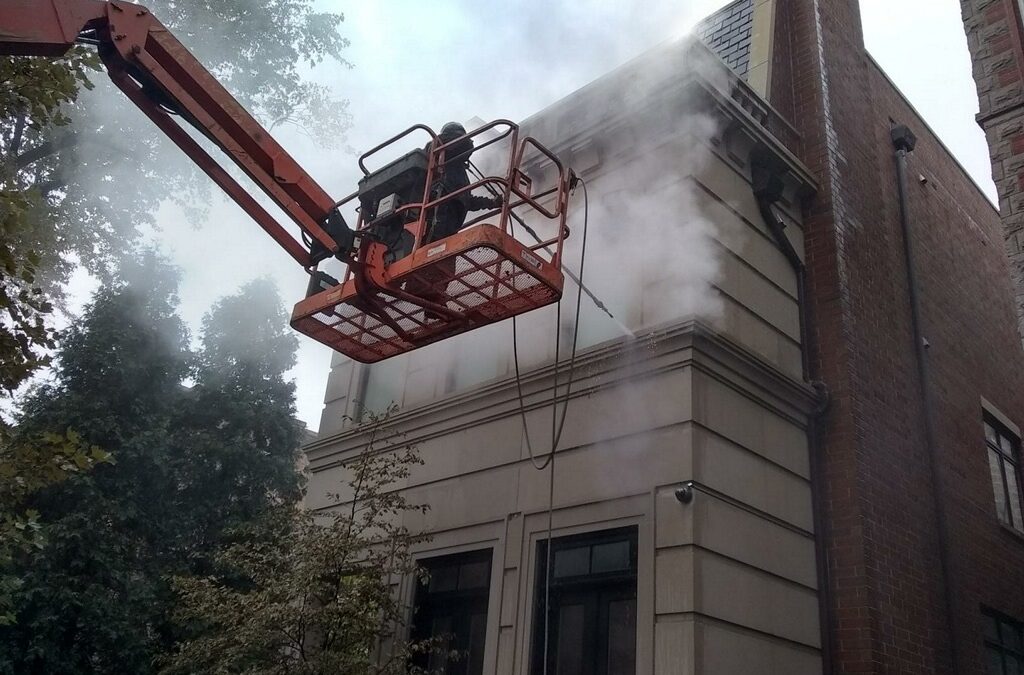Chicago’s architectural landscape is adorned with a variety of limestone structures, each contributing to the city’s rich historical and aesthetic fabric. Understanding the specific types of limestone used in these buildings is crucial, especially when it comes to cleaning and maintenance, as each type possesses unique characteristics that dictate appropriate care methods.
Common Types of Limestone in Chicago Architecture
Joliet-Lemont Limestone (Athens Marble): Quarried from the Lemont and Joliet areas in Illinois, this dolomitic limestone, also known as “Athens Marble,” was extensively used in Chicago’s 19th-century buildings, including the iconic Chicago Water Tower. Its durability and distinctive appearance made it a popular choice during the city’s rebuilding phase post the Great Chicago Fire of 1871.
Indiana Limestone (Bedford Limestone): Sourced from quarries in south-central Indiana, this limestone gained prominence in the late 19th and early 20th centuries. Renowned for its uniform texture and ease of carving, Indiana limestone has been used in numerous Chicago landmarks, such as the Tribune Tower.
Coquina: A sedimentary rock composed predominantly of shell fragments, coquina is relatively soft and porous. While not commonly used in Chicago’s primary architecture, it may be found in ornamental elements or specific installations.
Dolomite: Similar to limestone but containing magnesium, dolomite is slightly harder and less soluble. The Joliet-Lemont limestone is a type of dolomitic limestone, contributing to its durability and weather resistance.
How We Determine the Correct Cleaning Process
Each limestone variety has a distinct chemical composition and porosity, which influences how it should be cleaned. Before selecting a cleaning method, we conduct a thorough assessment that includes the following steps:
-
Material Identification: By examining the stone’s texture, color, and composition, we can determine whether it is dolomitic, fossiliferous, oolitic, or another type of limestone.
-
Porosity Testing: We assess the stone’s ability to absorb moisture, which helps us understand how it will react to various cleaning methods and solutions.
-
Chemical Sensitivity Analysis: Using controlled tests, we check the stone’s reaction to different pH levels, ensuring that no damage occurs during cleaning.
-
Environmental and Historical Considerations: Some limestone surfaces have historical coatings, patinas, or environmental wear that require special attention.
-
Test Cleaning: A small, inconspicuous area is cleaned first to observe how the limestone reacts before proceeding with the full process.
Understanding these factors allows us to tailor our approach, ensuring that each limestone type is preserved without risking deterioration. This careful process helps maintain the integrity and longevity of Chicago’s historic and contemporary limestone buildings. For more information Please Call 312-384-0044

